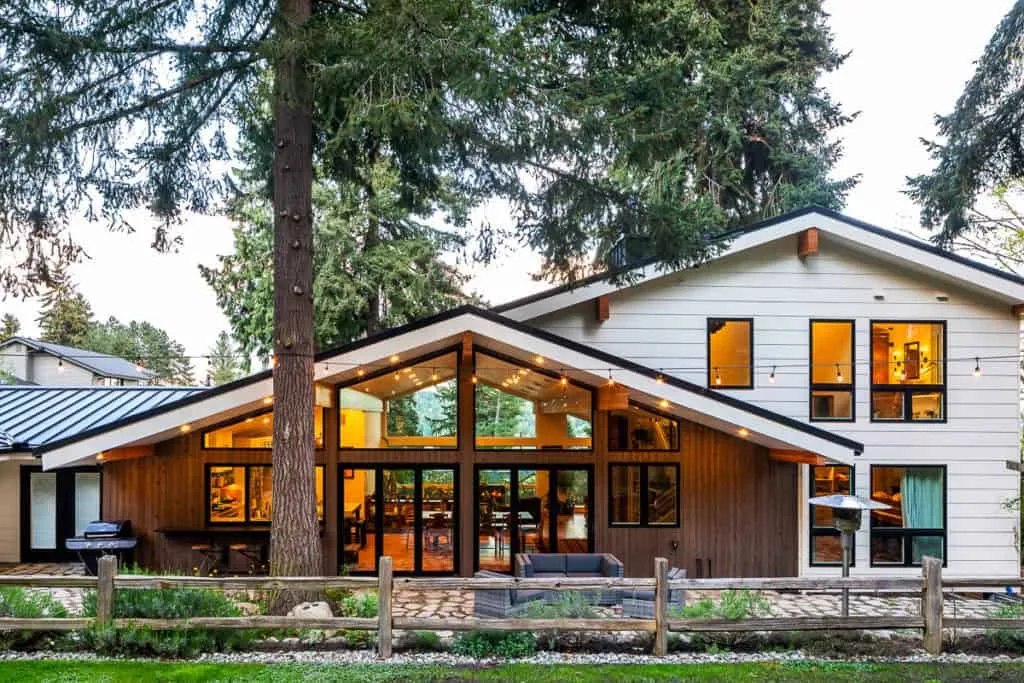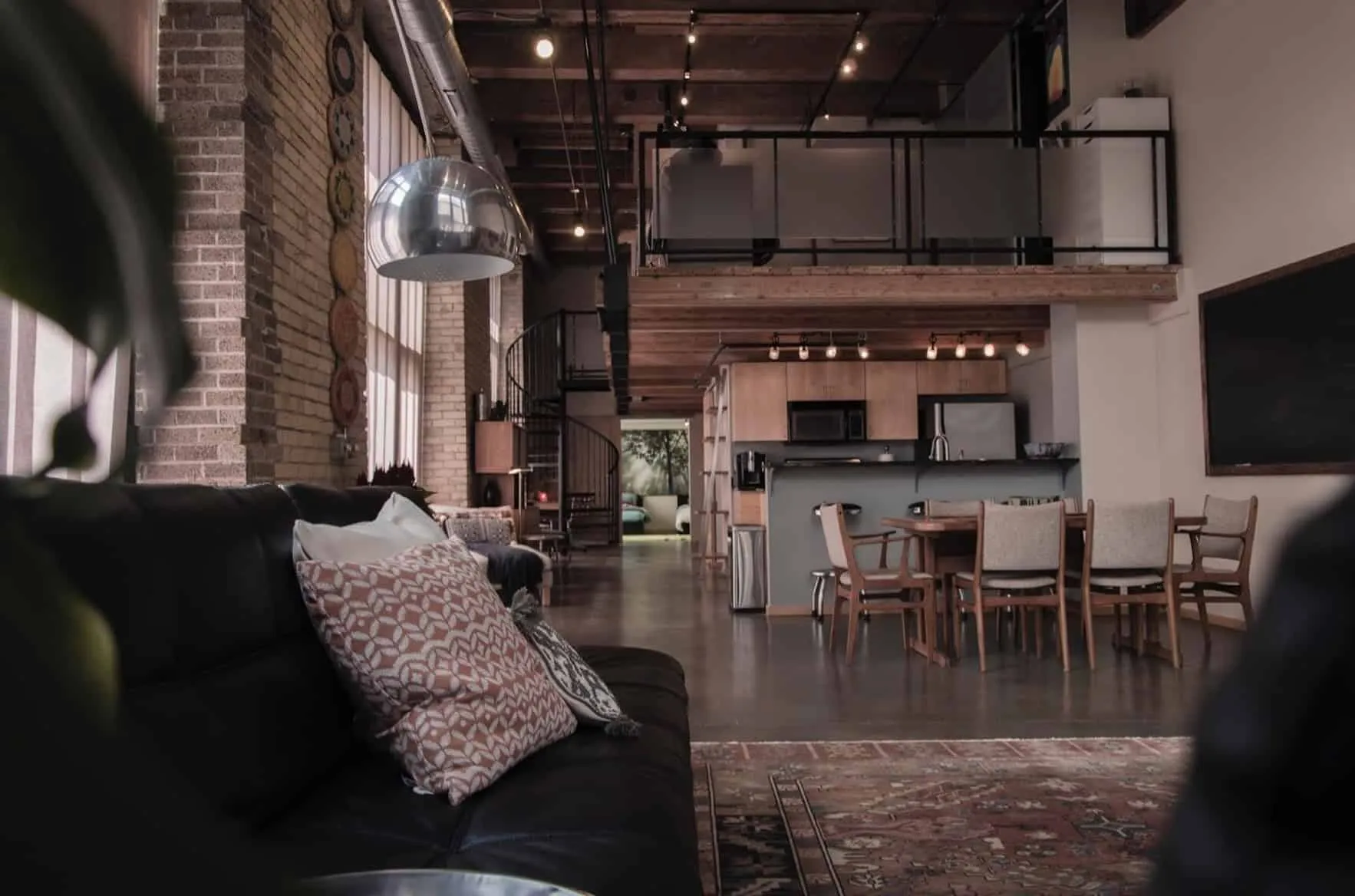There can be your advertisement
300x150
How to Finance Adding a Room to Your Home
Home renovation and expansion can not only increase the value of your property but also improve your quality of life. Whether you're planning to expand space with an additional room or update the kitchen, financing your home improvement project is a crucial step toward bringing your ideas to life.
Worried about getting funding due to poor credit history? Don't worry, financing the addition of a room is possible even with bad credit. There are many lenders offering loans up to $10,000 for poor credit history on COMPACOM, and some loans specifically designed for home additions are tailored for people with bad credit scores. However, keep in mind that interest rates may be higher in such cases, so it's important to compare various lenders and loan options.
Home renovation and expansion can not only increase the value of your property but also improve your quality of life. Whether you're planning to expand space with an additional room or update the kitchen, financing your home improvement project is a crucial step toward bringing your ideas to life.

Worried about getting funding due to poor credit history? Don't worry, financing the addition of a room is possible even with bad credit. There are many lenders offering loans up to $10,000 for poor credit history on COMPACOM, and some loans specifically designed for home additions are tailored for people with bad credit scores. However, keep in mind that interest rates may be higher in such cases, so it's important to compare various lenders and loan options.
How to Get Fast Financing for Adding a Room
Financing your home addition or renovation project doesn't have to be a complicated task, especially if you understand the variety of online loan options. Here are five key types of loans to consider for financing a home addition:
These are personal loans for home improvements. Home addition loans, along with their counterparts like renovation and remodeling loans, are specifically structured to fund various home improvement projects. These loans are an excellent option if you have a clear plan for renovation and a good understanding of your expenses. They offer flexibility in use for various home improvement needs, from minor updates to major renovations.
A home equity loan is a type of borrowed money where your mortgage serves as collateral. This means the lender has the right to take possession of your home if you fail to meet payment terms. Due to lower risk for the lender, such loans often have lower interest rates compared to unsecured loans. However, the risk for the borrower is significantly higher as there's a possibility of losing your property.
HELOC works like a credit card. It provides a variable line of credit up to a certain limit, based on the value of your property. You only pay interest on the actual amount borrowed. This flexibility makes HELOC a useful tool for home improvement projects where expenses may be spread over time.
This financial strategy involves refinancing your current mortgage for a larger amount than you currently owe, then using the difference to fund your home addition. This is a good option if you've built up significant equity in your home and current interest rates are lower than when you first took out the mortgage.
Similar to personal loans for home improvements, condo financing can also be used for adding a room, specifically adapted for condos. This type of loan is ideal if you want to enhance your condo by adding or renovating space. Like personal loans, condo financing offers flexibility in use, making it a suitable choice for various types of improvements.
It's important to carefully evaluate each option and choose the one that best suits your financial situation, the scale of your home improvement project, and your long-term financial goals. Don't forget to compare interest rates, loan terms, and fees from various lenders before making a decision. Your dream home is just a few steps away from proper planning and securing the right loan!
How to Get a Home Addition Loan Online?
Getting a home addition loan online has become easier thanks to technological advancements, making this process fast and convenient:
For additional information about online loans, you can visit the Consumer Information page provided by the Federal Trade Commission. It offers valuable insights into the loan process and what consumers should know when applying for online loans.
What Are the Requirements?
The eligibility criteria for home improvement loans may vary depending on the lender. Common requirements include:
- Proof of Income
This usually includes recent pay stubs, tax returns, or bank statements to confirm a steady income source.
- Minimum Age
The legal age to enter into a loan agreement in many states is 18 years old. Some lenders may set a higher age threshold.
- U.S. Residency or Citizenship
Many lenders require borrowers to be U.S. residents or citizens, although exceptions may apply.
- Valid Identification Document
A valid ID such as a driver's license or passport is required for identity verification.
How Much Does Home Improvement Financing Cost?
The costs of financing home improvements can vary significantly depending on the scale of your project. Here is a sample cost table for various types of home improvements:
Home ImprovementEstimated CostAdding a Room$20,000 – $75,000
Kitchen Remodeling$12,000 – $35,000
Bathroom Remodeling$6,000 – $15,000
New Roof$5,000 – $10,000
Basement Remodeling$10,000 – $35,000
Outdoor Space (e.g., decks, balconies, pools)$4,000 – $50,000
Home Systems Upgrade (e.g., heating, electrical, plumbing)$2,000 – $15,000
Always get several quotes for your project and carefully evaluate your financing options to find the one that fits your budget and needs.
Benefits of Home Improvement Loans
Home improvements, especially significant ones like adding a room or kitchen remodeling, can greatly increase the selling price of your home. This long-term effect can help cover renovation costs when you sell.
Home improvement loans are usually processed faster than home equity loans or mortgage refinancing. You can receive money within a few days, making them ideal for urgent home improvement projects.
Unlike home equity loans or mortgage refinancing, home improvement loans can typically be used for any purpose. This means you can use these funds not only for home improvements but also for other expenses when needed.
Financing home improvements through a loan helps you avoid depleting your savings. This allows you to maintain a financial safety net for emergencies.
Home improvement loans usually have a fixed payment schedule. This makes budget planning easier since you know exactly how much you need to pay each month.
In some cases, interest on home improvement loans may be tax-deductible. However, this largely depends on the nature of the improvement, and you should consult a tax advisor to confirm.
What to Consider Before Applying?
If your credit score is not very good, you may face high interest rates. This can make the loan more expensive in the long run.
Like any loan, there is a risk of getting into debt if you can't manage your payments effectively. This is especially likely if you take out a loan that's too large.
Some home improvement loans are secured, meaning you must provide your home as collateral. If you fail to repay the loan, you risk losing your home.
Applying for a home improvement loan will result in a hard inquiry on your credit report, which can slightly lower your score. Additionally, late payments will negatively impact your credit rating.
Some loans include origination fees, late payment penalties, and prepayment penalties. It's important to be aware of these potential costs.
While some improvements may increase your home's value, not all renovations provide a return on investment. It's important to consider whether the loan cost and renovation expenses will be covered by an increase in home value.
Changes in the real estate market can affect your home's value. If your home's value decreases, you might end up owing more than the property is worth.
Considering both benefits and potential drawbacks, you can make an informed decision about whether a home improvement loan suits your circumstances.
Tips for Choosing the Best Type of Loan for Home Improvements
- Consider the Scale of Your Project: Different loans suit different project sizes. For small projects, personal loans or credit lines might be suitable. For larger projects, home equity loans or cash-out refinancing may be better options.
- Evaluate Your Financial Situation: Your current financial status and credit score can significantly influence the type of loan you qualify for and the interest rate you receive.
- Research Several Lenders: It's important to compare rates, terms, and fees from different lenders before making a decision.
Conclusion
Getting money for adding a room might seem daunting, but with proper planning and research it can be a sensible step. Whether you're using a home improvement loan or exploring options like $10,000 loans for bad credit history, there are many ways to finance your project.
For a deeper understanding of various financing options, it may be helpful to consult resources like the U.S. Department of Housing and Urban Development's Home Improvement page. It provides valuable information and tips on home improvement loans and related topics.
Remember, every financial decision matters and deserves careful consideration. It's always recommended to consult with a financial advisor to better understand your options and make the choice that best fits your personal circumstances and financial goals.
More articles:
 How to Clean a Carpet Like a Professional: 6 Tips
How to Clean a Carpet Like a Professional: 6 Tips How to Deal with Soil Compaction in the Backyard
How to Deal with Soil Compaction in the Backyard How to Combine Tile and Parquet in One Room?
How to Combine Tile and Parquet in One Room? How to Cool Down Without Air Conditioning
How to Cool Down Without Air Conditioning How to Cool Down Your Home Without an Air Conditioner During Hot Weather?
How to Cool Down Your Home Without an Air Conditioner During Hot Weather? How to Properly Light an Open-Plan Layout
How to Properly Light an Open-Plan Layout How to Combine and Use Pastel Yellow Color in the House
How to Combine and Use Pastel Yellow Color in the House How to Make a Traditional Veranda Cozy in Winter
How to Make a Traditional Veranda Cozy in Winter